Doc & Co team up with butterflies and Rastafarian centipedes to battle man-sized ants, laser-nosed DustBusters and a giant wig from outer space
Doc & Co turn into thimble-sized tree-huggers and match wits with giant matchboxes and murderers in this prop-fuelled serial.
Podcast: Play in new window | Embed
The Doctor, Susan, Ian and Barbara finally get back to England. And it’s not the Dark Ages or distant future either! Alas, excessive space pressure has inadvertently rendered them Lilliputian in stature. Also, there’s murder afoot!
A (surprise, surprise) TARDIS malfunction has the troupe materialising as one-inch characters in the garden of government investigator Mr Farrow, whose murder at the hands of bio-chem financier Mr Forrester and subsequent disposal of whose body aided by Mr Smithers, are of barely any consequence worth mentioning.
Still, Doc & Co are pitted against (relatively) giant insects and a fiendish house cat that vanishes in an almost Yeti-like fashion, and Ian is forced to match wits with a gargantuan matchbox. Any fan of oversized props, or indeed Land of the Giants, Gulliver’s Travels or Honey, I Shrunk The Kids will have a field day.
We both loved this Doctor Who serial and hated it, and while trying to decide which side to take, we had fun poking holes in its plot.
Big thanks to JD (@mariuskane), Gina (@GinaGuerrero1), Esther (@es2812) and Kyle (@sinistersprspy) for sending in their mini-reviews and Whovian banter, all of which are included in this ep.
Our Ratings and Reviews of this Doctor Who serial materialise, regular-sized, at the 59m40s mark.
Thanks for listening!
#DoctorWho #DrWho #ClassicWho
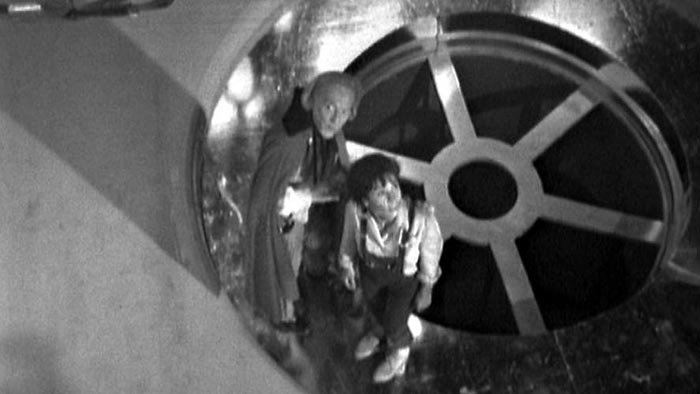











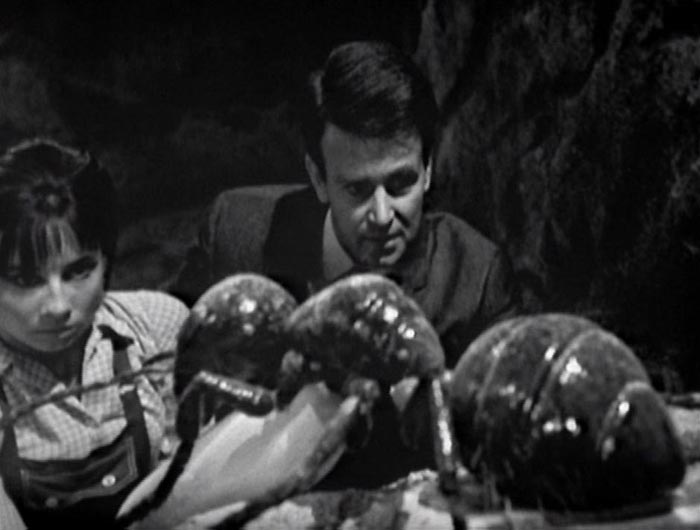

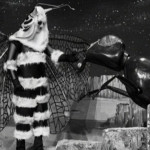

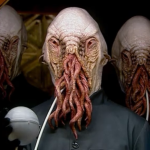
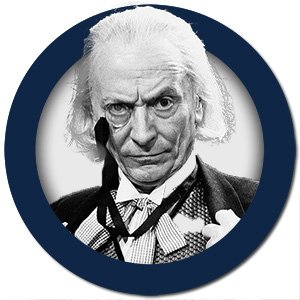
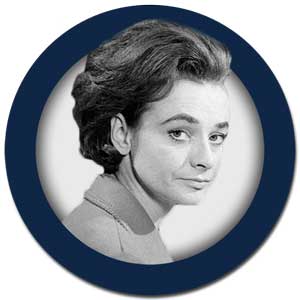









irst off, I love you guys and the podcast dearly!
I was grateful that this story was only 3 episodes because I found that, although it had fun bits, it was fairly boring story. This episode to me was still unintentionally funny.
My Stray observations:
The Doctor was downright jolly in the story. Getting his hair curled by Barb’s stylist must having brightened his mood. It appears the writers have softened his character, not sure for the better.
The Doctor actually gave a Genuine apology
The sets were great and surprisingly detailed (Its obvious the budget went up this season).
The actor playing Forester was trying really hard to be sinister.
They finally gave Susan something to do, kind of.
Lastly, the cat, in my opinion,was the best character in the whole story.
My rating is a 3.7 for a good effort in the sets, but for leading us on with the title.
Season 2 Episode 1:Planet of Giants Review
So, to kick off the second season of Doctor Who, the BBC felt it was appropriate to have a story where the drama hinges on an often over-looked aspect of life in the TARDIS: Dimension.
Specifically, the physical dimension.
Continuing on with the narrowly-missing-the-intended-target premise, the TARDIS crew ends up in 1960’s London, only this time they are the wrong size. (Insert applicable and predictable Lilliputian jokes here)
However, a Doctor Who serial would not be complete without a conflict. In this case, the backdrop is a story surrounding a deadly insecticide, a murder, a meek, spineless scientist, and an unscrupulous ne’er do-well with dollar signs in his eyes.
As I rewatched this episode, I recognized something which would become the norm for Doctor Who: The Doctor (and companions) interfering for the greater good. This is an important distinction, given their travels in Season One consisting mostly of trying to rewrite events for whatever personal reasons.
In the opening, there is a key bit of dialogue from Ian: “How can we understand? You’ve never explained it to us.” This identifies a very important aspect of The Doctor’s relationship with his young companions, and will become a common issue throughout The Doctor’s travels. Even with Matt Smith’s Doctor, there is often a rapid-fire delivery of techno babble, with little to no breakdown or explanation.
The “giants” ended up being merely set dressing, and could have easily been replaced with an overheard conversation by the TARDIS crew, as the two men left the lab. The story became intriguing once it was apparent that the insecticide was really bad, and needed to be stopped, and that despite their size, they could still effect positive change.
Positives:
a) Equal footing:
We were treated to (finally) some wonderful back-and-forth between The Doctor and Ian, on the same page, as men of science. There really needs to be more of this – it was great.
b) Character development:
For once, Susan’s screaming was reduced to a minimum, and used for only when it made sense (eg: A giant, prowling cat). The rest of the episode she was somewhat gung-ho, even leading the charge up the chemical soaked drain pipe (before hazmat procedures were standard). The fact that Susan had figured out why the TARDIS doors opened in flight was glossed over, and she really deserved the credit.
c) Simple, straight forward plot:
This story was by no means complex. But it was a wonderful simple story, and provided some great moments between the different characters. Sometimes less is more.
d) Follow the bell:
There is a bad habit in television, that when a gimmick is used, it becomes very quickly over used. In this case, the oversized ants, lying dead everywhere, and other physical cues as to the TARDIS crews’ predicament, never seemed to get silly. Each instance of size reference was appropriate and utilized, i think, for the right reasons. It can be a tricky thing to play, and i feel it was handled quite well.
Negatives:
a) Ian & Barbara:
I was a little disheartened that the dialogue between Ian and Barbara, while on the table in the lab, was not smoother, more congenial. They are after all, friends, and colleagues. Too much of “yes, i know”, or “i don’t know” tells me that their familiarity is limited to what Ian is willing to put up with. Also, Barb was completely under used.
b) Barb’s poisoning.
Had Ian and Barb been given dialogue or direction for that scene with the seeds, then the poisoning aspect could have been a terrific dab of pressure to add to everything else going on. He was standing right there – how did he not see her pick the seed up?
c) Where did the cop come from at the end?
It would have made more sense, if this was in fact a lab (rather than the dudes house) ,that a security guard would be randomly doing rounds, adding tension to an already heated environment (see what i did there?).
d) Closing scene shenanigans.
So The Doctor brings a seed into the TARDIS. And as he fixes the “dimension” issue and gets them back to normal size, the seed miraculously shrinks to proper size. What? Sorry. No. I don’t buy it. The seed is now protected inside the TARDIS. It wouldn’t suddenly shrink.
I was expecting The Doctor to use the seed to analyze the insecticide and give Barb an antidote. But alas, I guess that’s not spacey-wacey enough.
Finally, as at the beginning, the scanner screen refused to work again at the closing of the episode. Perhaps The Doctor forgot to get the decoder for his cable box?
Though seemingly a smaller episode, I ended up enjoying this one because of the very serious storyline buried in a silly suit. It introduced some character points that would end up defining the very nature of The Doctor, and provided a fun distraction from “big, lumbering epic” episodes that deal with significant events. It was also a very tame beginning to the season, designed at drawing in those people that hadn’t yet watched the show.
Planet of Giants
Barbara and her companions, Ian, Susan and the Cranky Old Man get back to Earth, but sadly due to his TARDIS malfunctioning (again) they’ve shrunk to the size of a small pea.
The Good
The First Scene – The doors opening mid flight lead me to think that we were in for another “In The TARDIS” romp like Edge of Destruction, sadly it wasn’t to be…
The Production Values in this episode are very good, considering this is 4 years before Irwin Allen’s Land of the Giants, this looks significantly better.
The Bad
This was originally written as a four parter, and I cannot help to imagine how awfully slow it would have been with another episode of the Doctor and Ian discussing chemical formula… and speaking of which…
Ian – Who is meant to be a science teacher, doesn’t seem to understand Chemistry in this episode, maybe the constant being knocked out during Season 1 means that he’s gained amnesia.
The Ending – Barbara is cured by a Deus Ex Machina, I would have liked The Doctor and Ian come up with a cure for Barbara rather than just “Lets take off and hope that fixes everything.”
Overall
It’s fun – it’s something different, and it shows the TARDIS crew in a good light and no-one seems to go on holiday, or asleep for a couple of episodes. But sadly, the story could have been so much more, it seems like a little bit of filler before the next episode and the TARDIS Crew don’t actually interact with the guest cast in ANY way… it’s like two separate, but related stories weaving their way nearly touching each other but never quite doing so. Someone wrote an episode of “The Avengers” and dropped Ian and Barbara in rather than Steed and Mrs Peel.
2.6
I’ve had mixed feelings about this one. As a teenager when I watched for the first time I thought it was total drivel. Fast forward 20 years and I thought it was OK but full of holes and bad production. Now again years after that I feel the production for the time was better than I remember, but it still drags a bit. It’s hard to make an episode where the main characters never interact directly with the plot that is all around them. ST:TNG and Stargate SG-1 both did this better.
I think k though that my problem with the story is that, while the potential for disaster is high I never felt there was much at stake. By that I mean that even if the chemical got past this hurdle I feel it would have been stopped at the next level anyway. The writer makes a point to say this is the last level of approval before the big time, but that’s just not how it works (at least I’d like to think so). This leaves us with a whodoneit where we already know the murderer and his motives. Normally at this point the question is, “well how does he get caught?” But since the main characters can’t really influence the world at large (see what I did there?) That’s spoiled too. This leaves us with an episode where the main characters walk around and encounter amazing things in the micro world, and for me they just don’t encounter enough of it to inspire the imagination. In the end they rather accidentally provide the moment for someone else to save the day and then they go home.
The Barbra sickness is ruined because Barbra acts very out of character for it. As past episodes prove, if she is in peril the very FIRST thing she would do is tell the others. She also gets frustrated, lashes out and practically panics at times. The character never acta this way before or after.
At the end of the day we’re left with some dry supporting characters, many of whom are never on screen long enough to care about, and the others we are made not to like due to morals and ethics. Honestly it’s a strange thing when the phone operator is not only the most enjoyable character, but is the one who does the most to stop a crime.
This one just doesn’t have an excessive amount that appeals to me.
2.0
The TARDIS malfunctions once again, and the doors open in the middle of the time vortex, causing great panic and consternation. When the travellers materialise, they realise they have been shrunk, to ‘about the size of an inch’. In the middle of an English garden, they have to deal with the struggles of miniature life – menaced by insects, admired by a hungry cat, almost trodden on by a murderer.
Oh yes – because this isn’t just any old run-of-the-mill house. This is one where a fiendish mastermind is plotting to become very rich on the production of an insecticide that kills all living creatures.
THE MAJESTY
First up, and perhaps most obvious – the design is fantastic. Not only do we have incredibly designed prop ants and worms, as well as plug-holes, briefcases and matchboxes, but we even have a moving fly. Now fair enough it flies away off-screen, but even while it is on screen it is wriggling and moving all it’s appendages. Barbara falling into a swoon when she sees it is both unintentionally comedic and a slap in the face to women everywhere, but it’s a magnificent construction!
Secondly and more generally, it’s just a great idea. The travellers have fought aliens and travelled into the past and the future. Now they discover that a back garden in suburban England can be as hazardous and dramatic as any alien planet. Whether they are navigating plumbing systems or being savaged by a (remarkably chilled out) cat, the mundane is seen with new eyes.
THE MISERY
This plot is so full of holes it could be used for catching fish. Why does the TARDIS malfunction in the first place? Why do the doors opening cause everyone to shrink? Why does the scanner explode after ‘trying to photograph something too big for the screen’? Why are the voices of the humans slowed down but everything else is normal speed? Why does Barbara not tell the others that she has contracted the illness? How can a man get shot in somebody’s back garden in 60s England without the neighbours asking questions? How is the chief scientist unaware of the lethality of his formula? Why does Barbara regrowing to her full size make her better again? Why does the seed the Doctor picked up not grow full size at the same time as everything else in the TARDIS? How can the Doctor so quickly reverse the shrinking when he doesn’t know what he is doing? More could be added.
In addition, certain things are just a bit lame. The cliffhanger ending is that a cat is looking at them. Episode two begins with said cat nonchalantly walking off. The whole thing is irrelevant when ideally we should expect a major plot development. The non-regulars – the big people – are all very flat. They reel off vast amounts of exposition to each other. (“You don’t have to keep on explaining to me” says one of them eventually. I agree!) Their plan is pretty unexciting: market an insecticide that kills too indiscriminately to receive government approval. Their downfall is equally dull: a policeman just happens to show up.
MAGICAL MOMENTS
-The Doctor, when asked how he knows an insect is dead, gets rather poetic: “Death has it’s own particular posture and appearance.”
-After the government inspector is shot, Ian walks past a vast blown-up still image of his dead face. It’s a striking shot, even though the effect is not particularly convincing.
-The Doctor climbs up the inside of a drainpipe that goes on for ever and ever. He’s a tough old fellow!
-It’s a powerful moment when Barbara touches the poisoned seeds and then realises what she has done. Her panicked attempts to rub the insecticide off her hands are pretty realistic, as is her initial denial that anything is wrong. However it does get a bit bizarre, as time goes on, that she doesn’t reveal the problem.
-The Doctor is asked if he can get them all back to normal. In a massive close up, he says “Of course I can! Of course I can – I hope…” Lovely!
-The Doctor becomes a arsonist for no particular reason. “Let’s cause some trouble! Start a fire!” His pyromaniac side is really coming out as he rubs his hands together watching the flame. “Not long now! Hee hee hee!”
-Ian and Susan lighting a match by carrying it like a lance and jousting a matchbox.
IN SUMMARY
I surprised myself by how much I enjoyed this story. Yes, you have to leave your brain at the door, but each scene, in its own right, is usually pretty entertaining, and the characters are generally likeable. I’m delighted it’s only three episodes – it would have deteriorated very quickly if it had been any longer. Perhaps it’s the classic version of ‘style without substance’, but it certainly has style!
OVERALL: 3.6
This is an incredibly solid serial. It was lighthearted, fun, and whimsical enough that I can overlook some of the logical inconsistencies, like why the hell Barbara is so damn obstinate about telling anyone that she touched the insecticide. A lot of this serial’s success is because of the way it was put together. The main plot of Planet of Giants has nothing to do with the Doctor and his companions, at least, not at first. It is the DN6 project and Forrester’s conspiracy to keep it going that really motivates the events of the story. Though the Doctor and his companions play a pivotal role in the resolution of the story, they are secondary to the plot until halfway through the final episode. In a way, the writers foregrounded the B Plot and backgrounded the A Plot, and it feels very fresh.
The serial is also very interesting in how it operates at two distinct levels: the macro and the micro. This dynamic means that the antagonist, Forrester, never actually discovers the protagonists who are working to thwart his plans. Likewise, the protagonists never know what motivates Forrester’s actions. Throughout the serial, it is very difficult for any interaction to occur across the barrier between the macro and the micro, as we see on a few occasions with the phone call and the exploding cannister. This resulted in some unique problems for the writers: they had to create a scenario that was feasible for miniaturized humans, and they had to bring in additional characters in Farrow and Smithers to help hit some plot beats in the absence of the protagonists. The approach taken to solve these problems is, in my opinion, nothing short of masterful.
Additionally, Planet of Giants gives us our first look at a wealth vs humanity dynamic that we will see many times throughout the series. Doctor Who will almost always use this dynamic as an opportunity to critique how the interests of the wealthy can conflict with the interests of the common man. I do think the way this serial handles this dynamic misses the mark a bit. Rather than demonstrate the way wealth can create perverse profit incentives within whole systems or organizations, Forrester is portrayed as a uniquely immoral individual, whose prioritization of his personal wealth is an aberration. Although I would prefer a more systemic critique to the individualistic framing of this serial, I generally see the critique overall as a net positive and especially useful as a message for a younger audience.
The biggest problems I have with the serial have nothing to do with the serial itself but with its placement within the series. I don’t think it functions well as a season premiere for two reasons. First, it doesn’t accurately reflect the contents of the rest of the show, which is incredibly important for a fledgling series. If the goal is to give new viewers a good idea of what they should expect going forward, Planet of Giants does not achieve it. For the series as a whole, this serial is about as atypical as it gets. Second, the tone of the serial is way too light for how I would typically like to see a season open. I understand that we are in the age of streaming now, and being able to binge has blurred the lines between where one season ends and the next begins. In that sense, this serial provides a welcome bit of levity between the brooding The Reign of Terror and the melancholic The Dalek Invasion of Earth. But in the sense that the structure of seasons still matters at all, it is very important for me to lead with something that hits a little harder. Still, the fact that I think this serial is a poor premiere does not factor into how I rate the serial—I just thought it was worth mentioning.
4.8/5